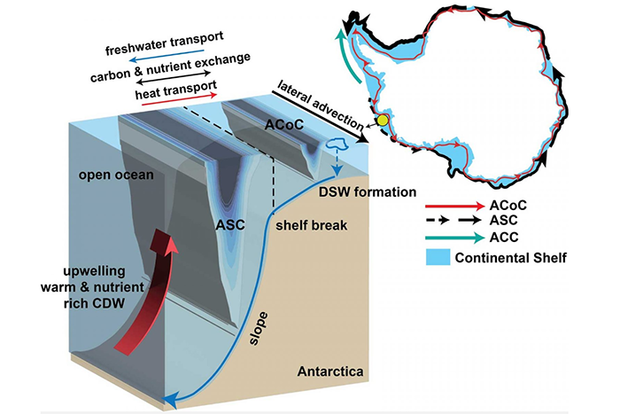Importance of the Antarctic Slope Current in the Southern Ocean response to ice sheet melt and wind stress change

Schematic representation of the along-slope and along-shelf circulation patterns at the Antarctic margin. Credit: R.L. Beadling

Schematic representation of the along-slope and along-shelf circulation patterns at the Antarctic margin. Credit: R.L. Beadling
Despite being the second-smallest ocean on Earth, the Southern Ocean plays an outsized role in absorbing heat and carbon generated from human activities, accounting for over 40% of the planet’s oceanic carbon uptake and 67%–98% of the global ocean heat uptake. As the climate warms, however, changes to the Southern Ocean’s circulation – caused by stronger, more southerly winds and increased meltwater from the Antarctic ice sheet – could affect its heat and carbon absorption abilities, which in turn would have significant consequences for global temperatures and sea level rise.
The authors used two coupled models, CM4 and ESM4, to examine how an increase in and southward shift of the winds over the Southern Ocean, as well as the continued melting of the Antarctic ice sheet, would alter the physical properties and circulation of the Southern Ocean, using a preindustrial control background state to isolate the response. The two models have different representations of the Antarctic Slope Current (ASC), which moves water westward along the Antarctic continental slope and plays a major role in the exchange of ocean properties, including heat, between the continental shelf and the rest of the global ocean.
When changes in wind stress and Antarctic meltwater were imposed, both models showed that as meltwater from the Antarctic Ice Sheet enters the ocean, the surface of all parts of the Southern Ocean except for the Weddell Sea cools. The surface of the Weddell Sea, meanwhile, showed limited sensitivity to freshwater from the ice sheet, and instead warmed as a result of changes in wind stress.